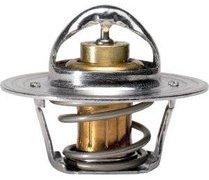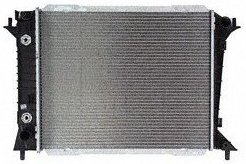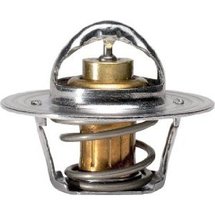Engine Overheating the Other Common Causes

When people have an engine overheating condition they often want to head straight for the thermostat. Although this component is a leading cause of overheating it is not the only one. This quick auto repair article is mostly about the other things that can cause high engine operating temperatures.
Often I have been brought a vehicle that was overheating and the customer said go ahead and replace the thermostat. I usually ask them if they would like me to diagnose the overheating or just go ahead and replace the thermostat. The educated consumers usually consent to the diagnosis of the car problem. This also leaves me wide open for the I told you so.
In either case if I replace the thermostat I usually go the extra mile and throw the old one into some boiling water and see if it physically opens. Before we move on to other common problems that can cause engine overheating let’s finish up with the thermostat and its technical definition.
The engine thermostat is a temperature responsive water flow control valve. When the engine is cold the thermostat will remain closed allowing coolant to circulate only inside the engine block. This lets the engine warm up fast while remaining at an even temperature. When it reaches the correct operating temperature the thermostat begins to allow some of the heated coolant to flow into the radiator.
Other Causes of Engine Overheating
More than once I have replaced the thermostat, burped or removed the air in the cooling system, taken the vehicle for a ride and found that the temperature gauge still swings up past the normal range. While the car is cooling off the next thing I check for is the available airflow through the radiator and air-conditioning condenser.

On most models the air-conditioning condenser is mounted in front of the radiator. Air needs to flow freely through both of these heat exchanging parts for them to work properly. The operation of the cooling fan pulls air in, but can also pull in dirt, dust, small animals, insects and debris.
I usually take a trouble light and hold it close to the radiator from the inside while I perform my inspection from the outside looking through the grille. On most models this gives a good look at the situation. You should be able to see the light easily through both parts.
I have found some crazy things stuffed between the radiator and the condenser over the years. Some of the bigger offenders such as paper plates and plastic bags can cut off large portions of the radiator and easily cause an engine to overheat. In most cases you can pressure wash these components to get them clean. But in extreme cases sometimes the radiator needs to be removed to be cleaned properly.
Is the Radiator Clogged
Of course you cannot take off the radiator cap until the engine is cold. In fact when I’m going to inspect the inside of the radiator I prefer that the engine has not been run that day. When you take off the cap, you have to remove some engine coolant to see the condition of the internal passageways.
I have a fluid remover that looks like a turkey baster that works well. You can also put a drain pan under the radiator and squeeze the upper and lower hoses to push out some coolant. Regardless of the mixture of the coolant or the type of antifreeze used some lime, scale and rust will form in the cooling system.
Although some is normal excessive amounts can cause engines to run at higher than normal temperatures. On most radiators with some coolant removed you can see the inlet and outlets of the core passageways with a flashlight. In my opinion anything more than a 25% blockage should be addressed. Chemicals are available to clean rust and scale from the cooling system.
These chemical cleaners are commonly called radiator flushes. Note that when one of these flushing agents is used that they are installed and circulated prior to replacing or actually flushing the engine coolant. After one of these chemical flushes are used, the system should be totally drained, flushed with plain water, and refilled with fresh antifreeze and water mixed to the proper strength. If possible you should use distilled water because it contains fewer minerals than tap water.
Does Radiator Stop Leak Work
It is true that chemicals are also available to plug small leaks in an engine’s cooling system. In most cases I do not recommend the use of radiator stop leak. I have seen it because more problems than I have seen solved by using this kind of additive. In isolated cases these chemicals can work to seal leaks in the radiator. But remember they will not seal leaking rubber hoses or connections that flex during vehicle operation.
I have also seen a few cases where people have added multiple cans of radiator stop leak to a vehicle. In one case it ruined the radiator and the engine had to be disassembled to remove the hardened stop leak from the engine block cooling passages. Thinking back on this (Monte Carlo) it was actually the hardest engine overheating I ever diagnosed.
The car was traded in and eventually wound up purchased at auction so the vehicle history was unknown. When I inspected the radiator as explained above I didn’t see the stop leak because it had settled to the bottom of the radiator and sealed the passageways from about halfway down. After figuring that out and replacing the radiator, the vehicle still overheated because the cooling passages in the engine block were plugged with stop leak.
Yes, a thermostat is a common cause of engine overheating. Maybe it should be the first thing you replace, if the part is easy to access. But remember that there are a few other common causes that will make the engine overheat. For more of the most recent articles posted to this website this next link will take you back to the auto repair blog home page.


